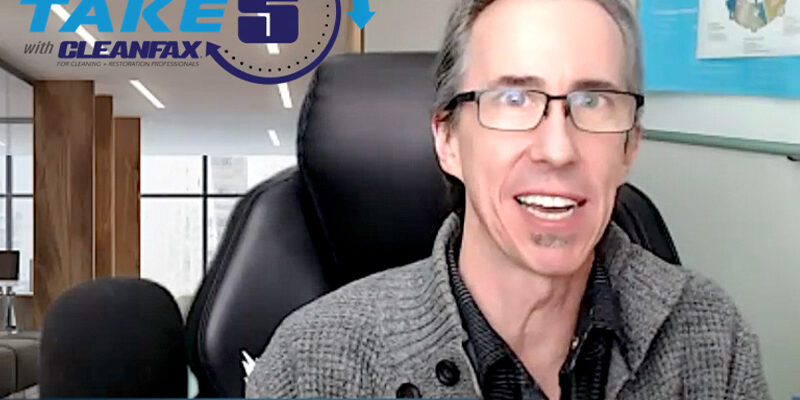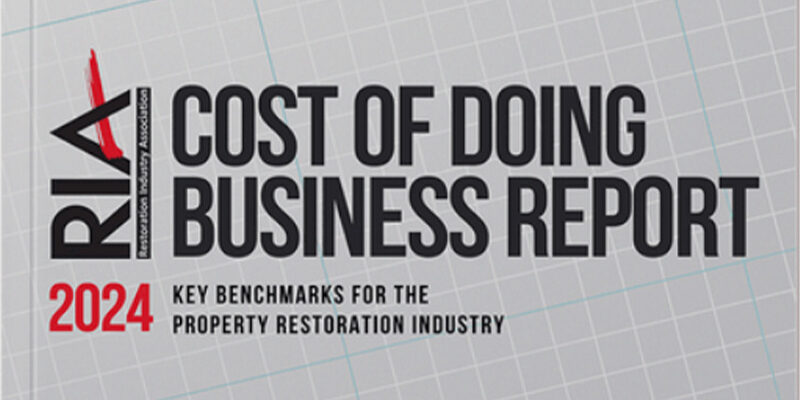How to Create Marketing Messages That Attract Clients

Editor’s Note: Cleanfax recently produced a webinar on marketing strategies for acquiring new clients. It featured Howard Partridge, owner of Phenomenal Products, along with John Clendenning, the CEO and founder of Carpet Cleaner Marketing Masters. Together, they shared powerful insights and exclusive tactics guaranteed to build a stronger client base and boost profits. The following article is based on the webinar and questions by the live audience.
What are three of the most common marketing mistakes companies in our industry make?
Howard Partridge: The biggest marketing mistake is not marketing to their existing clients. It cost a lot more to gain a new client than to keep an existing one. Cleaning is a repeat service. You want clients for life. Plus, they can use other services and are the primary source of referrals. Second, not having a referral reward program is a big mistake. And when people do have one, they structure it wrong. Third, not doing referral partner marketing. Flooring professionals, Realtors and interior designers are all great sources for referrals, but most cleaners don’t invest time in building those relationships.
John Clendenning: The three most common mistakes are as follows:
- New companies tend to think they need to compete on price and focus all their advertising and marketing around low prices and running discounts.
- Being too generic in their messaging, such as using the baby laying on the carpet images on their website, boilerplate slogans, and not being authentic in their messaging.
- Not having an “all-in” perspective — marketing is cumulative, and online and offline results feed off each other — the ideal goal is to maximize your opportunity to attract a qualified lead, and not focus on one channel and exclude everything else.
How much time and what percentage of a company’s budget should be spent on marketing?
Partridge: The amount of time depends on the size of the company. I would say 10% of income is a good target, but again it depends on the size of the company and how fast they want to grow.
Clendenning: Marketing is the engine of a business that drives sales and growth — it includes everything a business does to attract and then retain customers. In the beginning, every spare minute should be spent focused on marketing, how are you going to outreach, where are you going to outreach, and to whom. To get momentum, investing 20% to 25% of projected revenue toward getting known in the marketplace should be the goal.
Once a business has carved out its brand and position in the local marketplace, gained some momentum, and is starting to become visible online and offline to its ideal target customer group — with many aspects of its marketing mix now established, automated, and outsourced to qualified vendors where possible — the time needed to devote to marketing now is more strategic versus tactical. I have found that it’s important to maintain a marketing budget of 15% to 20% of the revenue to continue to scale, solidify the market position for the long haul, and establish the businesses value so it can become a sellable entity when it’s time to exit.
How can you improve your customer satisfaction and retention?
Partridge: Show up on time with a professional uniform, a clean and professional truck, wear booties, do extras like free spotter bottles, listen to the client, and show that you care about them and their home and family. Do a post-cleaning walk-through with the client. Make a quality check call and send a comment card to every client.
Clendenning: Customer satisfaction comes down to making a promise and then delivering on that promise. “Wowing” a customer is about delivering an intentionally orchestrated “experience” at every stage of their customer journey that removes friction, is “remarkable”, and makes them feel exceptionally valued.
Wowing customers repeatedly throughout their customer journey is half the battle — following up consistently in a welcoming and meaningful way, to stay top of mind, and continuing to reinforce the relationship and your authority as the category leader in your marketplace — builds retention and will dramatically impact referrals.
How do you measure your conversion rate and profits directly acquired from your marketing efforts?
Partridge: For direct advertising, measure the number of dollars produced for every dollar invested. I feel like a 4-to-1 return is a good return. Client based marketing is measured differently. We mail to our clients every month and send an e-mail newsletter weekly. We also call them if we have not heard from them in 11 months. We measure our repeat business based on how much we did in the same period last year. We also measure client referrals. Finally, we measure how much new business we bring in from referral partners.
Clendenning: Having good lead management tracking and reporting systems has become essential in today’s business world. Using technology such as call tracking numbers, QR codes, lead source attributions, and analytics can help the business understand many parts of the buyer’s journey — and highlight quite a bit of a customer’s engagement with your brand up to the moment they reach out.
Some things can’t be directly tracked but can have a huge influence on conversion rates. Online reviews, sharing successful client projects, and social media activity can all influence a customer to eventually reach out and call one business over another, but the lead may only be attributed to the Google Business Listing that was looked up when they finally decided to call.
Consistently asking every customer, “What led you to call us today?” can help fill in some of the blank spots in knowing what supporting marketing and visibility efforts are helping to tip the scales and prompt customers to reach out.
What are some of the best diversification opportunities that can easily be marketed with current services?
Partridge: Carpet protector is one. Tile cleaning and upholstery cleaning are the easiest. Then you can add rug cleaning if you have the facilities, as well as natural stone cleaning with the right training and education.
Clendenning: For a carpet cleaning firm, expanding into more advanced off-site area rug cleaning can be a good diversification.
Tile and grout cleaning and wood floor cleanings are great services to add on and market to the existing database as a company grows and gains more experience in the industry.
I have found that dryer vent cleaning can be a good low-cost add-on service and perhaps a way to test the waters if expansion into duct cleaning is something that should be considered in the future.
Ultimately, the goal is not to diversify for diversification’s sake. Getting very good and very well-known at a core service or two, and focusing the marketing efforts and marketing budget on that to scale the business, is critical. Once the local brand is established and growing, then deciding if establishing a new service and allocating a marketing budget should be considered.
Should you outsource your marketing efforts?
Partridge: It depends on what kind of marketing you are doing. We focus on referral marketing and client-based marketing, so we do it in-house. Of course, we use vendors for graphics, mailings, and things like that, but we create the copy, and we have a team that calls on referral partners. If you do online marketing, you should definitely find someone who is getting results for other companies and use them.
Clendenning: Depending on startup capital, in the beginning, much of the marketing effort will be grassroots, shoe leather to the pavement — low investment, time-intensive outreach, and promotion.
As revenue grows, investing in marketing services and vendors that have the expertise and experience in helping cleaning firms with their online and offline marketing efforts will become a vital part of the ability of a company to grow.
Is social media, email, direct mail, or ad marketing best for a smaller company that can only invest in one or two at the moment?
Partridge: Networking and referral marketing is hands down the best way to get new clients. When I was on the truck, I kept a change of clothes with me. Anytime I wasn’t cleaning, I was marketing. I went to breakfast groups, lunch groups, and after five groups, and I called on flooring professionals, Realtors, and interior designers every day.
Clendenning: Social media is an investment of time, so learning how to be active and authentic on Facebook and perhaps one other social channel to start with would be a good use of time in building a local brand
Email marketing is low-cost and should be a staple of every marketing plan from day one. There are two primary lists to keep and regularly reach out to: Your customer list and your leads list. Each should hear from you in a welcoming and value-added way at least one time each month.
Direct mail can be costly and have a learning curve to get right, especially in the beginning. Mailing your customer “A-List” in your database along with strategic referral partners every month (a consumer-friendly newsletter works well for this) is a great way to stay top of mind relatively inexpensively, will generally deliver a great return on investment, and can be scaled as your revenues grow.
Using old school “five around” (we prefer “20 around”) door hangers and yard signs is a great, low-cost “direct mail” brand-building effort that every cleaning business should be doing regardless of size
Paid ads, such as on Google Pay-Per-Click, Google Local Service ads, and/or Facebook ads, while often being one of the most expensive costs per customer acquisition sources most businesses have, are pretty essential to invest in and get leads and to add into the growth engine.
Investing in organic rankings and Google Maps rankings as soon as possible is also important. While these take longer to grow and mature into organic traffic, leads, and jobs, rankings in search engines should become a significant source of customers for a cleaning service company over time. But only if you invest in growing that “asset” as early as you can.
Are there any free marketing tools you recommend for businesses online?
Partridge: Social media is free, but you have to work it. I see social media as a giant, 24-hour-a-day networking group. Post and interact in groups, but don’t just put ads out there. Put solutions to problems and position yourself as the expert.
Clendenning: Social media takes a time investment, but getting good at staying active, sharing tips and tricks, sharing your expertise, sharing successful projects and testimonials, joining local groups and being active in them and helping answer questions, etc… can build a lot of local brand awareness fast and generate estimate inquiries, and more.
How can a company perfect its brand image through marketing?
Partridge: Be polite, be a problem solver, and avoid talking shop to your buddies and showing off your ego. It’s a turn-off to prospects. Speak their language and post images that depict the lifestyle they want to live, not what you are living. Keep it positive.
Clendenning: Every company needs to know exactly who their ideal customer is first… and that’s different for different businesses. Once you know who you want to do work for, you can create your brand promise, compelling sales position, and your messaging that speaks directly to that ideal customer sub-group.
Once you have that foundation in place, you can tailor the rest of your marketing, such as the images you use, messages you put out, and where you market your services based on getting in front of your ideal customer.
From there, marketing is all about split testing and dialing in your message and offers to get better results.
What marketing data should companies be collecting to analyze in order to improve their business and customer relations?
Partridge: You should be asking the following questions for data analysis within your company:
- How much repeat business did your company do this month/year?
- How much customer referral business did your company do this month/year?
- How much referral partner business did your company do this month/year?
- How much did you spend on advertising, and how much did you get in return?
- How many sales calls did you make? How many bookings did you get?
- How many positive/negative reviews and comment cards did you get?
Clendenning: Knowing your core data such as lead source, conversion rates, bounce rates, and engagement across as much of your online (and offline) marketing efforts is crucial in helping a business owner know what’s working and what needs some improvement. Knowing what your customers truly think about your company. Online reviews are great to get, and they are a very strong conversion element to influence the next potential customers. Having a voice of the customer is critical. You can send a survey to every customer after the job, to get a more detailed and often more honest opinion about your services. When asked properly, we see that typically 50% to 70% of customers will willingly complete a customer feedback survey after a job.
What was your best resource for finding networking events?
Partridge: Google and BNI.com.
Clendenning: BNI, the local Chamber of Commerce and Board of Trades, joining local online business groups on Facebook and LinkedIn, related local associations such as home builders, property managers, condo associations, and more.
Any thoughts on targeting exclusively ‘high net worth’ prospects?
Partridge: Referral marketing all the way!
Clendenning: Marketing to the affluent requires that your brand message, the orchestrated experience your company provides at every touchpoint they will interact with, and your social proof (trust) elements all clearly align and speak to that audience’s wants, needs, fears, and desires. The look, feel, and messaging on all your marketing elements (website, social, mailers, vehicles, etc.) need to be tailored for that ideal customer avatar. The strategic referral partners that you will want to connect with, who already have this class of clientele tend to be much more cautious with their endorsements, so how you approach them, get their attention, and prove your trustworthiness of their referral should be well planned.
Put it all to work
It’s time to put these strategies into practice and implement them in your cleaning or restoration company. Keep an eye out for future installments of “Ask the Experts,” and watch the full webinar below.












